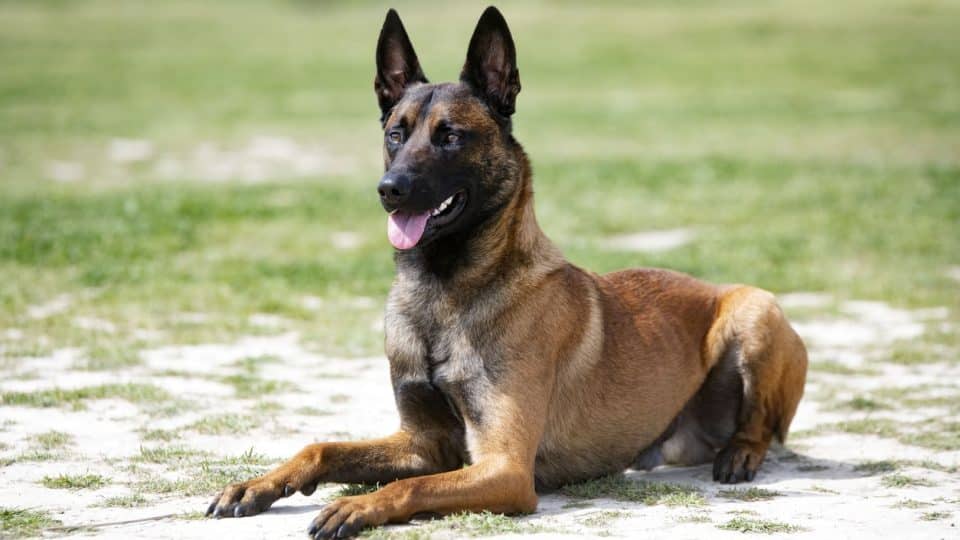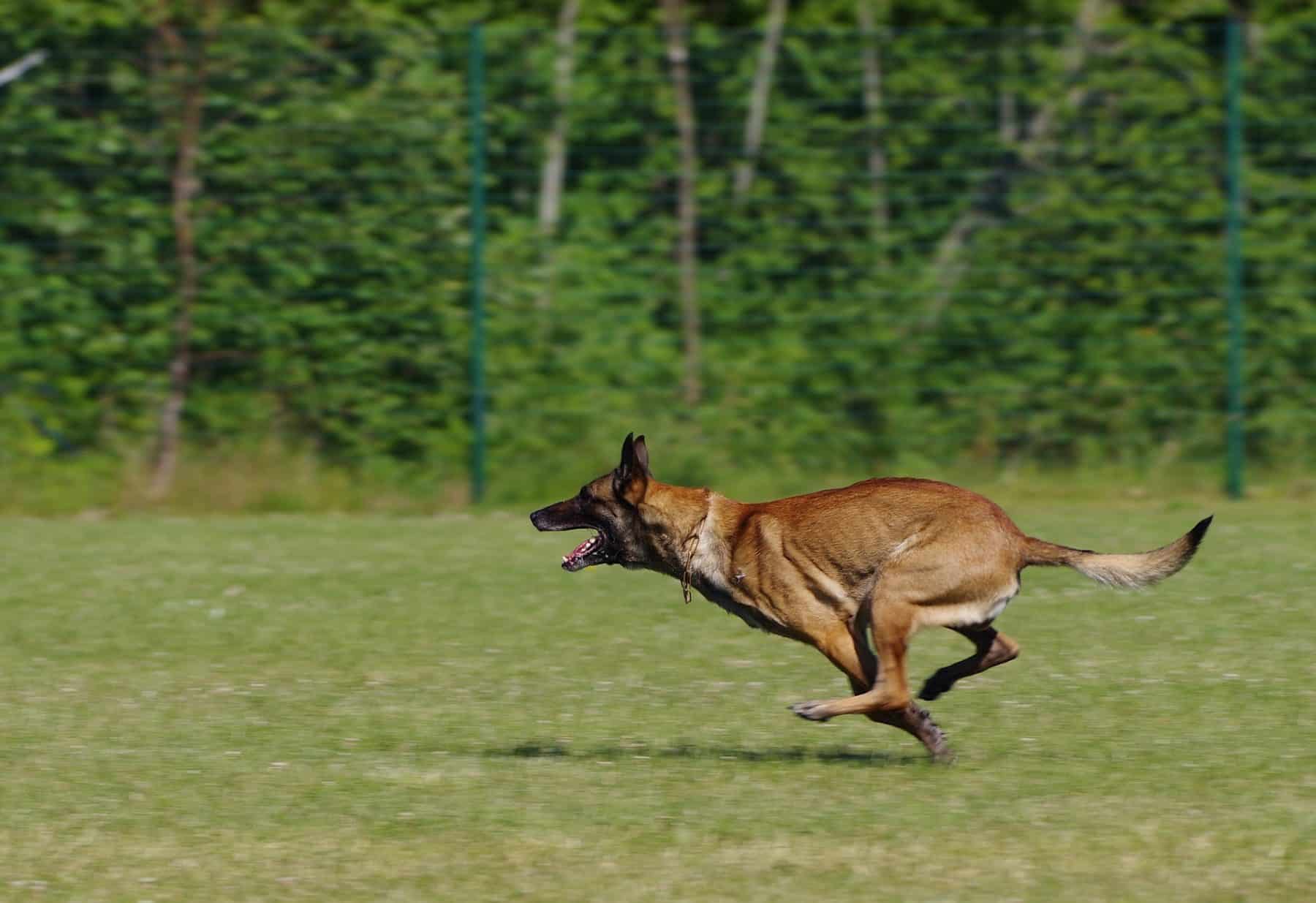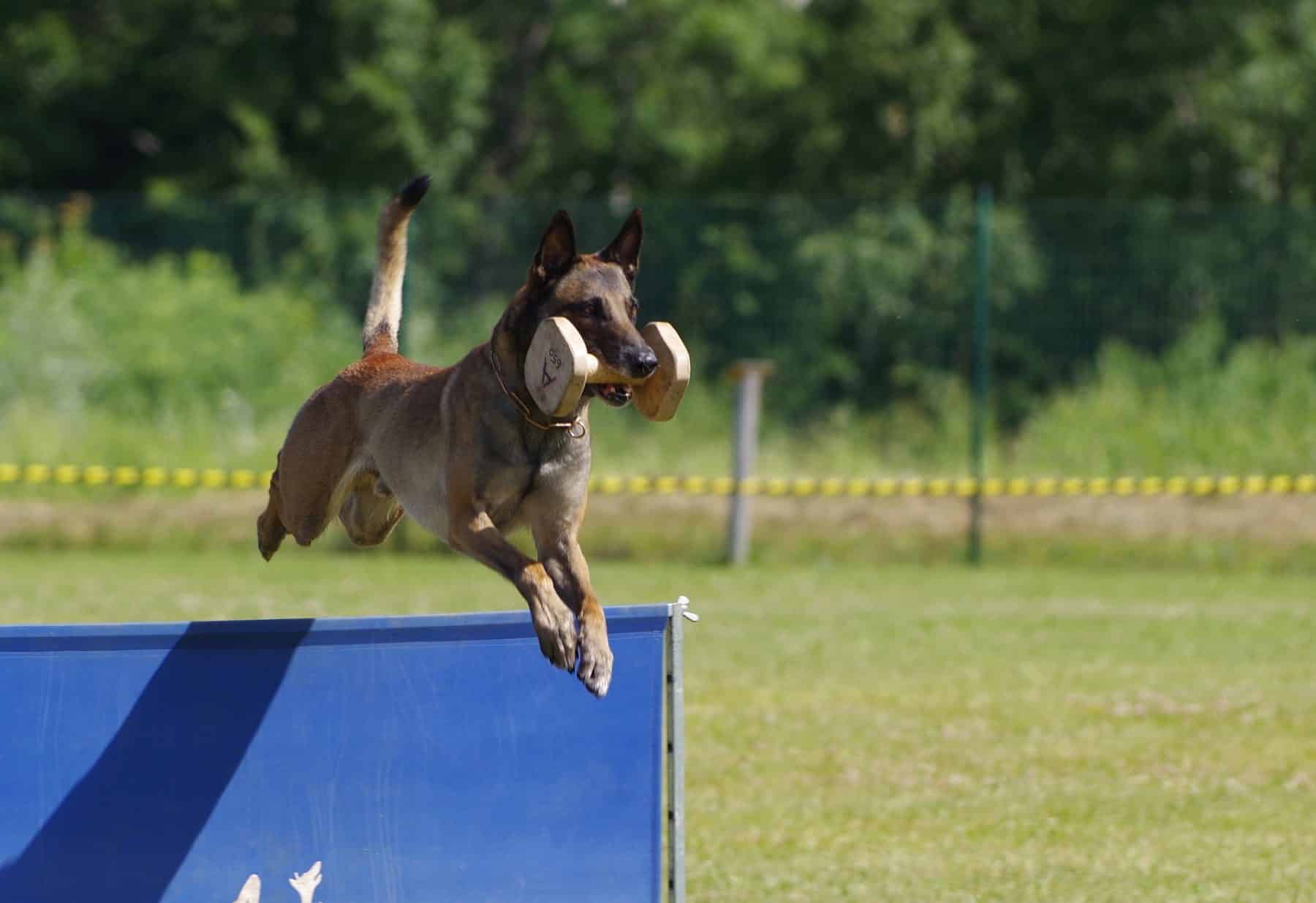- Not a substitute for professional veterinary help.
The Belgian Malinois is a medium-large herding breed. These dogs cherish their work and play—but above all else, their people.
They closely resemble German Shepherds in both appearance and temperament, but they have even more energy, if you can imagine that, and a slightly smaller size.
Belgian Malinois are incredibly intelligent and work-oriented, and you can train them to do just about anything. However, training requires consistency and positive reinforcement methods to prevent instinctive behaviors or bad habits.
Training, care, and love go a long way in creating a strong bond with your dog, according to Karen Shivers, Belgian Malinois exhibitor, trainer, and breeder at StoneFox. With these three things, Malinois have one of the strongest bonds to people and will do anything asked of them, she says.
Read on to learn the essentials of Belgian Malinois training, including the best training methods.
Belgian Malinois Traits
Belgian Malinois are highly intelligent, biddable, loyal, and extremely affectionate with their pet parents, Shivers says, adding that they also have strong guarding and protection instincts.
Generally, these dogs like to have things in their mouth. They show typical herding behaviors by chasing things that engage prey drive. Because of this, many won’t think twice about chasing, biting at your hands and legs, or leaping after small animals, Shivers says.
These dogs tend to be very sensitive to their pet parents and don’t do well with harsh training methods. Typically, this breed isn’t recommended for first-time pet parents or those who don’t have experience working with high-drive animals.
Show dogs vs. working dogs
Shivers says it’s worth noting the difference between “show” and “working” Belgian Malinois:
- Show line dogs: Typically, these dogs aren’t bred for their working ability. They generally have less drive and are more manageable as pets. They often do well with regular performance sports, like obedience, rally, nosework, dock jumping, and more.
- Working line dogs: These dogs tend to have very high drive and need a job in order to thrive. They don’t make good pets unless they’re given plenty of mental stimulation and frequent, regular exercise. Working dogs might do better with performance events, plus ring sport. Many Belgian Malinois work as police dogs.
Early Training And Bonding
Experts recommend you start training your Malinois as soon as you bring them home.
Early training doesn’t just help your puppy form the good habits that will set them up for success as they grow into adults. Training is also a great way to bond with your dog!
You can teach a puppy quite a bit in their first 6 months of life, from socialization and routine training to house training and other skills. What’s more, Belgian Malinois puppies can easily learn simple cues, including sit, down, come, stay, and retrieve.
It’s usually very easy to get Belgian Malinois to perform tasks for rewards like tugs, toys, or food, Shivers says.
With adults and rescue dogs, Shivers says you can begin formal training after you work on building trust and a relationship with your adopted dog.
When socializing your puppy or rescue dog, make sure to:
- Introduce new situations gently and positively.
- Keep encounters positive.
- Keep encounters brief.
- Start with less challenging environments or encounters.
Because Malinois are very sensitive to their people and want to stay nearby, keeping them close can help you bond.
Shivers says they’re happiest enjoying activities with you—from hiking, swimming, and performance events to curling up next to you on the couch.
Obedience Training For Belgian Malinois
Shivers says all dogs need some type of training. It’s also important to teach some type of communication so you can begin training.
In her experience, marker training is the best training tool. “Teaching the ‘mark’ for correct behavior, incorrect behavior, and ending a training session is so important to successful training,” she says. “Once your dog understands these four cues, training is limitless.”
You’ll want to begin obedience training as soon as your Belgian Malinois comes home and aim to teach basic skills first. These include house training, crate training, and leash training.
From there, training depends entirely on your future goals with your Belgian Malinois. Do you want to participate in performance events, share regular sports like hiking, or compete in various activities?
The importance of positive training
Like most dogs, a Belgian Malinois doesn’t do well with harsh training methods and physical punishments.
Because engagement and a strong relationship are highly important to their well-being, Shivers recommends positive reinforcement training only. She adds that playing and training together and having structure and consistency will help you bond closely with your dog.
Training length and cost
While training is an ongoing process, it can take 4–6 months to properly train a dog. The length of training will depend both on your individual dog and your goals for them.
Puppy classes generally last 6 weeks and can cost anywhere from $20–$50 per session, depending on location.
The cost of dog training can vary depending on the type of training. You can expect an average cost of about $300 per course for 4–6 classes and $150 per hour for private, in-person training.
Tips To Encourage Good Behavior
Teaching and learning correct behaviors is a process for you and your dog both.
It’s very natural for pups to show undesired behaviors from time to time, but you can easily redirect these behaviors without punishment. To guide your dog with positive reinforcement tactics, you might:
- Ignore the behavior
- Use a calm noise interruptor to stop the behavior
- Redirect other behavior to another object or activity, like a toy or snuffle mat
- Remove environmental triggers
- Use time-outs when appropriate
- Stay clear and consistent about the behaviors you do and don’t want
It’s especially important to address and redirect behaviors like biting, digging, and herding early on.
The most important thing when training your Malinois is establishing a process of communication and trust, Shivers says.
When To Consult A Professional Trainer
If your dog ignores basic commands, picks up unwanted or destructive habits, or has a hard time bonding with you, you may want to get help from a professional dog trainer or canine behavior consultant.
They can provide guidance on addressing behaviors like:
- Biting or growling
- Reactivity
- Inappropriate elimination
- Escaping
- Leash pulling
- Excessive barking
- Separation anxiety
The right dog trainer can help teach your dog new skills and work with you to prevent unwanted behaviors. They can also offer a better understanding of what an enriched life looks like for your dog so you can build a stronger bond.
A trainer generally costs $150 per hour. This amount will vary depending on various factors, including your location, the trainer’s experience, and the type of class.
You may want to work with a trainer from anywhere for a few weeks to a few months, depending on the behavior and your dog’s progress.
How To Help Your Belgian Malinois Thrive
As a herding breed, Belgian Malinois are at their best when they have plenty of opportunities to stay active and mentally sharp.
A few fun activities for your Belgian Malinois include:
- Exercise, including running, biking, and hiking
- Playtime, including fetch, tug-of-war, and hide-and-seek
- Dog sports like agility, flyball, and tracking
- Training
- Learning games
- Interactive dog toys
Providing your Belgian Malinois with consistent structure, using positive reinforcement training methods, and enriching their life with lots of playtime and training can help you form a strong, healthy bond!





